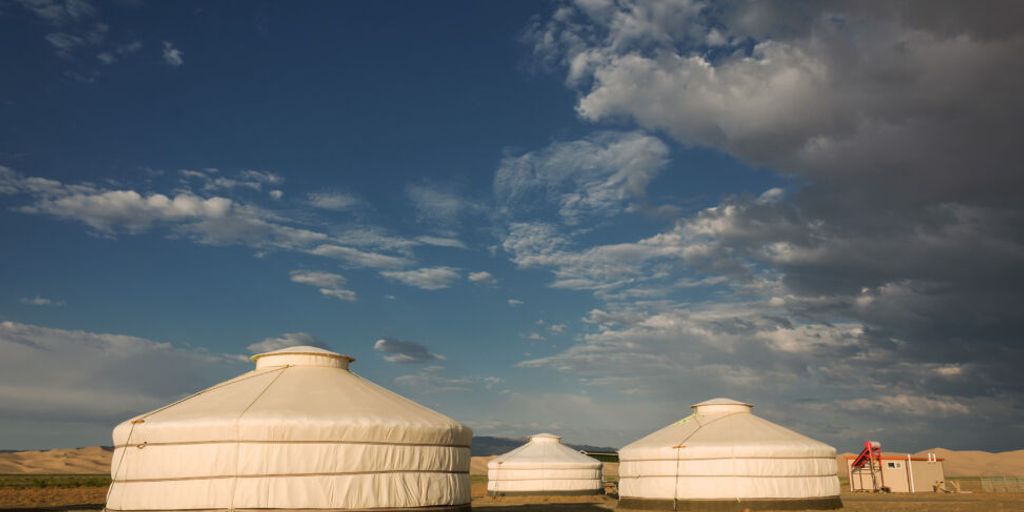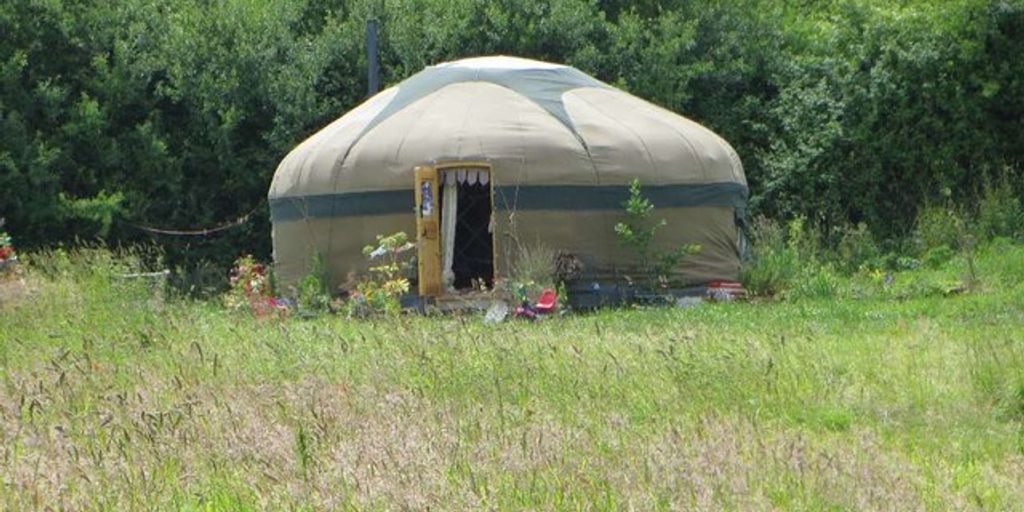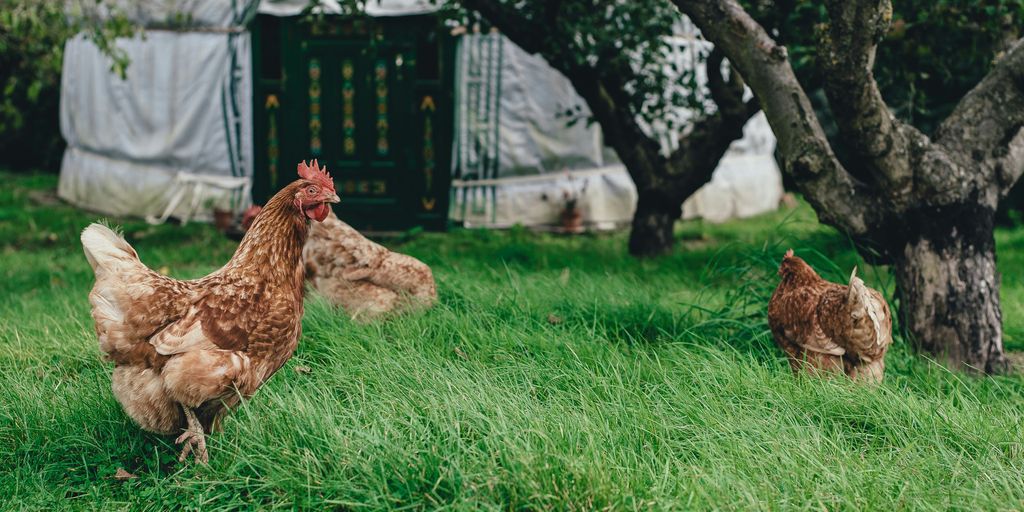Discovering the Traditional Nomadic Dwelling: What is a Yurt?
Yurts are unique, round tents traditionally used by nomadic people in Central Asia. These portable homes are made from a wooden frame covered with felt or fabric. They are designed to be easily assembled and disassembled, making them perfect for a mobile lifestyle. Today, yurts are popular worldwide for their simplicity, eco-friendliness, and versatility.
Key Takeaways
- Yurts are round, portable homes originally used by Central Asian nomads.
- They are made from a wooden frame covered with felt or fabric for insulation.
- Modern yurts are used for various purposes, including homes, commercial spaces, and eco-tourism.
- Living in a yurt offers benefits like simplicity, eco-friendliness, and a close connection to nature.
- Building a yurt involves planning, gathering materials, and following construction steps.
Understanding the Structure of a Yurt
Key Components of a Yurt
A yurt is a fascinating structure with several key parts. The walls are made from wood, like hazel or willow, and are formed by latticed pieces that unfold like an accordion. This creates a circular shape, leaving space for a door frame. The roof is either domed or conical, with a central crown and rafters that extend down to meet the walls. There’s usually a hole at the top for a chimney or skylight. All these parts are held together by a tension band, which gives the yurt its incredible strength.
Materials Used in Yurt Construction
Traditionally, the walls of a yurt are covered with fabric made from sheep’s wool, known as felt. This felt provides insulation and can be layered for extra warmth in winter. However, modern yurts often use canvas or vinyl for the wall coverings, which are lighter and more water-resistant. The frame itself is usually made from wood, but modern versions might include metal for added durability.
How Yurts are Assembled
Assembling a yurt is like putting together a giant puzzle. First, the walls and door frame are set up, followed by the roof construction. The roof slopes are then covered with an underlayer, followed by the felt or canvas cover. Finally, everything is secured with ropes or ribbons. The entire process can take just a few hours, making yurts incredibly convenient for nomadic lifestyles.
The modern-day yurt builds upon the ancient design, incorporating advanced materials and practical features.
The Historical Significance of Yurts
Origins in Central Asia
Yurts have been a part of life in Central Asia for at least two and a half thousand years. The first written description of a yurt was by the ancient Greek historian Herodotus. He described yurt-like tents as the homes of the Scythians, a nomadic people who lived around the northern Black Sea and Central Asia from about 600 BC to AD 300. These early yurts were essential for the nomadic lifestyle, providing a portable and sturdy shelter.
Evolution Over Time
As time went on, yurts spread beyond Central Asia. In the 13th century, during the Mongol Empire, yurts were introduced to parts of Europe and the Middle East. Marco Polo even mentioned the use of yurts in the court of Kublai Khan. In recent history, yurts have gained popularity in the West for their unique look and practicality. They have evolved from simple shelters to structures that blend traditional design with modern comforts.
Cultural Importance
Yurts are more than just homes; they hold deep cultural significance. For many, the yurt is a symbol of home and family. It represents a connection to nature and a way of life that values balance and harmony. Living in a yurt allows people to immerse themselves in the culture and traditions of the communities that have used these dwellings for generations.
The charm of yurts offers a unique experience, far removed from standardised hotels. Travellers in search of authenticity appreciate the simplicity of these traditional dwellings. Choosing to sleep in a yurt gives you the chance to immerse yourself in the culture, landscapes and lives of the communities that have carried on this tradition for generations.
Modern Uses of Yurts
Yurts have come a long way from their traditional roots, and today, they serve a variety of modern purposes. Let’s dive into some of the most popular uses of yurts in contemporary times.
Residential Yurts
Living in a yurt has become a trendy choice for many people. These round homes offer a unique living experience that combines simplicity with comfort. One of the biggest advantages of yurt living is its affordability. Compared to traditional houses, yurts are much cheaper to build and maintain. Plus, they can be customised with modern amenities like electricity, plumbing, and even air conditioning. Many people also appreciate the connection with nature that yurt living provides, as these structures are often placed in scenic, natural settings.
Commercial Applications
Yurts aren’t just for living in; they also have a range of commercial uses. Businesses have discovered that yurts make excellent rental accommodations, retail spaces, and even restaurants. Their unique design and cosy atmosphere attract customers looking for something different. For example, some parks and campgrounds offer yurt rentals as a more comfortable alternative to traditional camping. These yurts often come with added amenities like heating and private bathrooms, making them a popular choice for glamping enthusiasts.
Yurts in Eco-Tourism
Eco-tourism is another area where yurts are making a significant impact. Many eco-friendly resorts and retreats use yurts as guest accommodations. These structures are not only environmentally friendly but also offer a unique and immersive experience for guests. Staying in a yurt allows travellers to connect with the local culture and environment in a way that standard hotels can’t match. Plus, the portability and durability of yurts make them ideal for remote and off-grid locations.
Yurts offer a perfect blend of tradition and modern comfort, making them a versatile choice for various uses.
Whether you’re looking for a unique home, a commercial space, or an eco-friendly accommodation option, yurts have something to offer. Their growing popularity is a testament to their versatility and charm.
Living in a Yurt: Pros and Cons
Benefits of Yurt Living
Living in a yurt brings you close to nature without sacrificing comfort. You can hear the rain and wind, see the stars at night, and still stay safe and dry. The materials used in traditional yurts are recyclable, and since they don’t need a permanent foundation, they leave no lasting impact on the ground when moved.
Yurts are also quite safe. You can get doors that lock, and the latticed wood structure makes it hard for anyone or anything to break in. Plus, they are fairly inconspicuous and can be placed among tall shrubs or trees for added privacy.
Another great thing about yurts is their cost. They can be fairly inexpensive compared to other types of homes, and you might even save on taxes since they aren’t considered permanent structures. If you have some carpentry and sewing skills, you can even build your own yurt!
Challenges to Consider
One of the main challenges of living in a yurt is finding financing or getting a loan. Because yurts are unconventional, banks might be hesitant to provide loans. It’s also important to check local building codes to make sure you can place your yurt where you want.
Another downside is that everyone might want to come over and talk about your yurt! While this can be fun, it might also get a bit tiring.
Sustainability and Environmental Impact
Yurts are a great choice for those looking to live sustainably. They can be equipped with solar panels, composting toilets, and rainwater collection systems, making them an eco-friendly option. The circular shape of a yurt is energy-efficient, allowing for even heat distribution, and the felt lining provides excellent insulation.
Living in a yurt also encourages a minimalist lifestyle. With limited space, you learn to prioritise what truly matters, which can be a liberating experience.
Embracing a minimalist lifestyle in a yurt can help you appreciate the beauty of simplicity and the joy of living with less.
Comparing Traditional and Modern Yurts
Traditional Yurt Designs
Traditional yurts, also known as Gers, have been used for centuries by nomadic people in Central Asia. These structures are round, portable, and made from natural materials like wood and felt. The design is simple yet effective, with a wooden frame and a felt covering that provides insulation and weatherproofing. Traditional yurts are easy to assemble and disassemble, making them perfect for a nomadic lifestyle.
Modern Innovations
Modern yurts have evolved significantly from their traditional counterparts. Today, they incorporate high-tech materials and contemporary design elements. For instance, modern yurts often feature luxurious amenities like air conditioning, ensuite bathrooms, and even kitchens. The use of advanced materials such as space-age insulation and waterproof fabrics has made modern yurts more durable and weather-resistant.
Durability and Longevity
One of the key differences between traditional and modern yurts is their durability. Traditional yurts, while sturdy, are made from natural materials that can wear out over time. Modern yurts, on the other hand, use advanced materials that offer greater longevity and require less maintenance. This makes them a more practical option for long-term use.
Whether you prefer the rustic charm of a traditional yurt or the modern comforts of a contemporary one, both offer a unique and immersive living experience.
| Feature | Traditional Yurts | Modern Yurts |
|---|---|---|
| Materials | Wood, Felt | High-tech fabrics, Insulation |
| Amenities | Basic | Luxurious |
| Durability | Moderate | High |
| Ease of Assembly | Easy | Moderate |
| Customisation | Limited | Extensive |
In summary, while traditional yurts offer a glimpse into a nomadic way of life, modern yurts provide a blend of tradition and contemporary comfort. Both have their own unique appeal and can be customised to suit different needs and preferences.
The Cultural Symbolism of Yurts
Yurts in Mongolian Culture
Yurts, or gers as they are known in Mongolia, are more than just homes; they are symbols of Mongolian culture. The round, portable structure is a perfect fit for the tough steppes, thanks to its foldable lattice structure and felt cover. The design of the Mongolian ger has evolved to integrate with Buddhist culture. For example, the toono (crown) resembles the sun, and the uni (spokes) resembles the rays of the sun. This connection to nature and spirituality is deeply embedded in Mongolian life.
Yurts in Other Cultures
While yurts are most commonly associated with Mongolia, they are also significant in other Central Asian cultures. In Turkmenistan, for instance, a massive yurt-shaped structure called Ak Öýi (White Building) was constructed to celebrate the city of Mary’s year as the Cultural Capital of the Turkic World. This three-story building includes a café, offices, and a large auditorium, showcasing the yurt’s importance as a national symbol.
Symbolic Meanings
Yurts are not just practical dwellings; they carry rich symbolic meanings. The circular shape of the yurt represents unity and eternity. The materials used, such as felt and wood, symbolise a connection to nature. Living in a yurt allows people to immerse themselves in the culture, landscapes, and lives of the communities that have maintained this tradition for generations.
The charm of yurts offers a unique experience, far removed from standardised hotels. Travellers in search of authenticity appreciate the simplicity of these traditional dwellings.
Building Your Own Yurt

Planning and Design
Building your own yurt is an exciting project! First, you need to decide on the size and design. Think about how many rooms you want and if you need extra features like a skylight or additional wings. Planning is crucial to ensure everything fits together perfectly.
Materials and Tools Needed
You’ll need a variety of materials and tools to get started. Here’s a quick list:
- Wooden lattice (hazel or willow works well)
- Roof rafters
- Tension bands
- Fabric for covering (canvas or vinyl)
- Basic carpentry tools (saw, hammer, nails)
Step-by-Step Construction Guide
- Prepare the Base: Start by laying out a flat, stable base. This could be a wooden platform or a simple ground covering.
- Assemble the Walls: Unfold the wooden lattice and form a circle, leaving space for the door frame.
- Install the Roof: Attach the roof rafters to the top of the lattice walls, meeting at a central point.
- Add the Tension Band: Wrap the tension band around the outside to give the structure its strength.
- Cover the Yurt: Finally, cover the walls and roof with your chosen fabric, securing it tightly.
Building a yurt is like putting together a giant, circular baby gate. It’s a fun and rewarding experience that brings you closer to nature.
And there you have it! Your very own yurt, ready to be enjoyed. Whether you’re using it for a cosy home or a unique getaway, the process is both challenging and incredibly satisfying.
Building your own yurt can be a fun and rewarding project. Imagine having a cosy, unique space that you built yourself! If you’re interested in learning more about how to get started, visit our website for detailed guides and tips. Don’t miss out on creating your own special retreat.
Conclusion
In conclusion, the yurt is more than just a shelter; it is a testament to human ingenuity and adaptability. From its origins on the Central Asian steppes to its modern-day applications, the yurt has proven to be a versatile and sustainable living option. Whether used as a full-time home, a unique rental space, or a cosy retreat, yurts offer a special blend of tradition and innovation. They remind us of the importance of living in harmony with nature and the value of simplicity. As more people seek eco-friendly and cost-effective living solutions, the yurt stands out as a timeless choice that continues to inspire and adapt to our changing world.
Frequently Asked Questions
What is a yurt?
A yurt is a portable, round tent traditionally used by nomadic people in Central Asia. It has a wooden frame and is covered with felt or fabric for insulation and weatherproofing.
How is a yurt constructed?
A yurt is built using a wooden frame, including a lattice wall and roof ribs. The frame is covered with layers of fabric or felt for insulation. The structure is held together by tension bands and ropes.
What materials are used to make a yurt?
Traditional yurts are made from wood for the frame and felt made from sheep’s wool for the covering. Modern yurts may use additional materials like metal, plastic, and advanced fabrics for better durability and insulation.
What are the benefits of living in a yurt?
Living in a yurt offers a close connection to nature, a simpler lifestyle, and lower living costs. Yurts are also eco-friendly and can be more sustainable compared to traditional houses.
Can yurts be used for purposes other than living?
Yes, yurts are versatile and can be used for various purposes, including as guest houses, studios, classrooms, and even commercial spaces like cafes and shops.
How long does it take to set up a yurt?
Setting up a yurt can take anywhere from a few hours to a day, depending on its size and the experience of the people assembling it.





